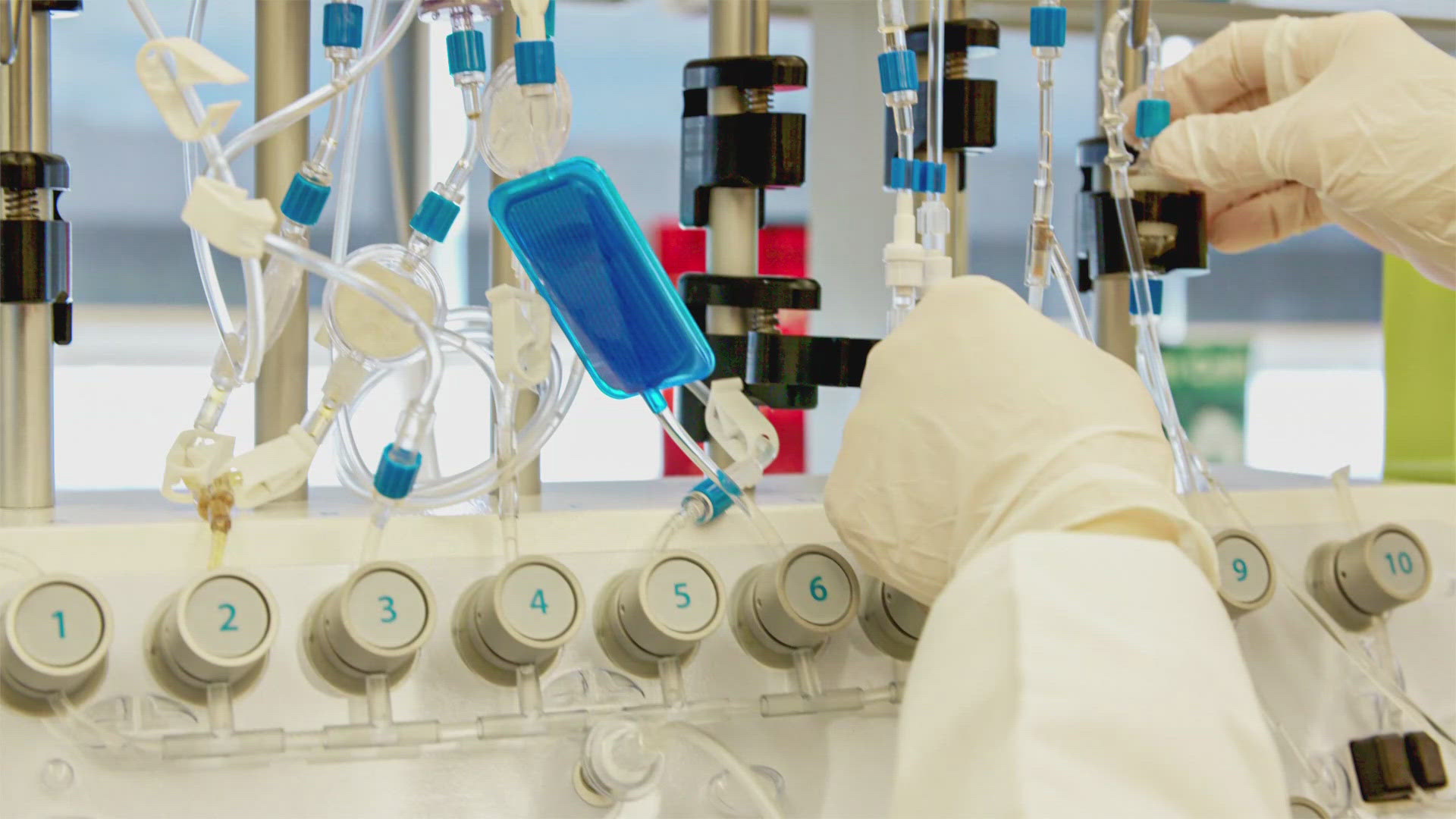CLEVELAND — In 2011, our own Jim Donovan underwent a donor bone marrow stem cell transplant as a treatment to battle CLL, or chronic lymphocytic leukemia. He spent a month in the hospital, and endured a few days of chemotherapy that wiped out his immune system.
He was limited from visitors to protect him from potential exposure to infection, then he still had to wait until after the stem cells were infused as his immune system began to rebuild.
The treatment worked. He went into remission, but it wasn't an easy experience.
Fast forward a decade and Jim had to battle a relapse of CLL once again, only this time, treatment had changed. He would use his own stem cells this time.
This experience was definitely somewhat easier. For some patients fighting blood cancer, they won't even have to spend a night in the hospital.
University Hospitals Seidman Cancer Center has been working for several years to bring outpatient stem cell therapy to patients. It's not new — there are centers around the country that have been doing it for the last decade, but it does require specialized and trained staff.
For now, it's only offered to certain patients.
"The type of patients that we perform what is called an autologous transplant — rescuing you with your own cells — are often patients who have multiple myeloma," Dr. Leland Metheny, a heptologist and oncologist at UH Seidman Cancer Center, says. "So that's a that's a fairly common blood cancer."
The patients must have their cancer under control before they qualify for treatment. They'll be given a growth factor to boost stem cells a couple of weeks before, then when they're ready, they'll come in and give blood, which will contain their stem cells. Then, they can go home.
The next day, they'll return and get a high dose of chemotherapy that only stays in the system for 24 hours. But again, afterward, they can go home. This is where the treatment differs from the past.
"We used to think patients would need to be in a bubble and steer clear of everyone and everything that could be potentially infectious, but that's not necessarily the case any longer," Metheny explained. "We used to also counsel patients not to eat vegetables that had been fully cooked. That's not necessarily the case either in this setting. A lot of those hyper-safe recommendations have gone by the wayside because we find them to be not effective, and quite frankly, they might increase the patient's anxiety profoundly, because you can never get anything clean enough, right?"
This process allows the patients to recover at home with a better quality of life, and is more cost-effective for the patient, the hospital, and insurance.
Like everything in health care, the more we learn, the more it evolves and becomes more efficient. Metheny says what's next will be using this method with different types of cancers that require re-engineered types of stem cells, hopefully by the end of the year.

